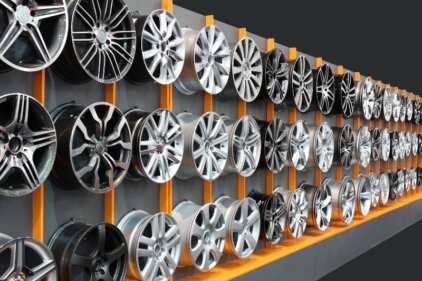Recently, We stumbled upon a fascinating innovation that is set to revolutionize the way we travel on the road – airless tires. Unlike traditional pneumatic tires that rely on air pressure for support, airless tires are designed to eliminate the need for inflation. In this article, We will delve into the advantages of airless tires, explore the technology behind them, discuss their impact on the automotive industry, and shed light on the future developments and potential applications of this groundbreaking innovation.
Advantages of Airless Tires
One of the most significant advantages of airless tires is their enhanced durability. Traditional pneumatic tires are prone to punctures, which can lead to unexpected breakdowns and costly repairs. With airless tires, this concern becomes a thing of the past. The unique design of these tires, typically featuring a solid or honeycomb structure, ensures that they are resistant to punctures and can withstand even the harshest road conditions. This not only provides peace of mind for drivers but also reduces the frequency of tire replacements, resulting in long-term cost savings.
Another advantage of airless tires is their ability to maintain consistent performance over time. Traditional tires tend to lose air pressure gradually, affecting their grip and handling. This can compromise the safety and efficiency of a vehicle. Airless tires, on the other hand, offer a stable and reliable performance throughout their lifespan. Whether it is a scorching summer day or a freezing winter night, these tires provide consistent traction, ensuring a smooth and controlled driving experience in all weather conditions.
Additionally, airless tires are more environmentally friendly compared to their pneumatic counterparts. The production and disposal of traditional tires contribute to pollution and waste. By eliminating the need for air, airless tires reduce the overall carbon footprint associated with tire manufacturing. Furthermore, the durability of these tires translates into fewer replacements, resulting in less waste and a more sustainable approach to mobility.
Airless Tire Technology
Understanding the technology behind airless tires is crucial to grasp the potential of this innovation. There are two main types of airless tire designs: solid and honeycomb. Solid airless tires are made entirely of a solid material, such as rubber or a composite material, which provides the necessary support and cushioning. On the other hand, honeycomb airless tires feature a unique hexagonal structure that mimics the shock-absorbing properties of air-filled tires. This design allows for flexibility and responsiveness while ensuring durability and puncture resistance.
One of the key components of airless tire technology is the use of advanced materials. Engineers and scientists are continually exploring new materials that offer the perfect balance of strength, flexibility, and longevity. From high-performance rubber compounds to cutting-edge composites, the goal is to develop a material that can withstand the rigors of daily driving without compromising on comfort or safety.
Another aspect of airless tire technology is the integration of smart features. With the rise of connected vehicles, airless tires can be equipped with sensors that provide real-time data on tire pressure, temperature, and wear. This information can be relayed to the driver, allowing for proactive maintenance and preventing potential issues before they escalate. By embracing the concept of the Internet of Things (IoT), airless tires are paving the way for a smarter and more efficient driving experience.
The Impact of Airless Tires on the Automotive Industry
The introduction of airless tires has the potential to disrupt the automotive industry on multiple fronts. Firstly, the enhanced durability of airless tires means fewer tire replacements, leading to cost savings for both consumers and manufacturers. This shift could significantly impact the business models of tire manufacturers, as they may need to adapt their production processes and supply chains to accommodate the longer lifespan of airless tires.
Furthermore, the improved safety and reliability offered by airless tires have the potential to reduce accidents and enhance overall road safety. Punctures and blowouts are common causes of accidents, and airless tires eliminate these risks. With fewer accidents, insurance companies may need to reevaluate their pricing models, potentially leading to lower premiums for drivers.
Another area where airless tires could make a significant impact is in the realm of autonomous vehicles. As self-driving technology continues to evolve, the reliability and durability of tires become paramount. Airless tires offer a level of consistency and dependability that is essential for the safe operation of autonomous vehicles. By eliminating the risk of sudden tire failures, airless tires can contribute to the widespread adoption of autonomous vehicles and the realization of a future with safer and more efficient transportation.
Airless Tires versus Traditional Pneumatic Tires
While airless tires offer a multitude of advantages, it is essential to compare them to traditional pneumatic tires to understand their full potential. One of the key differences between the two is the way they distribute weight. Pneumatic tires rely on air pressure to support the weight of the vehicle, whereas airless tires distribute the weight more evenly across the entire tire surface. This even weight distribution enhances stability and control, especially during high-speed maneuvers or sudden braking.
Another notable difference is the maintenance required for each type of tire. Pneumatic tires need regular checks for air pressure, as underinflated or overinflated tires can negatively impact fuel efficiency and handling. Airless tires, on the other hand, require minimal maintenance in this regard, as they do not rely on air pressure. This can save drivers time and effort, as well as reduce the chances of tire-related issues on the road.
However, it is worth noting that airless tires are not without their challenges and limitations. One of the primary concerns is the ride comfort. The absence of air makes it harder for airless tires to absorb shocks and vibrations, potentially resulting in a rougher and less comfortable ride compared to pneumatic tires. While advancements are being made to improve the overall comfort of airless tires, this remains an area that requires further development.
Challenges and Limitations of Airless Tires
Although airless tires offer numerous advantages, there are several challenges and limitations that need to be addressed for their widespread adoption. One of the main challenges is the manufacturing process. The unique design and materials used in airless tires require specialized manufacturing techniques, which can be costlier and more complex compared to traditional tire production. Overcoming these manufacturing challenges is crucial to ensure that airless tires remain economically viable for both manufacturers and consumers.
Another limitation is the potential increase in road noise. The absence of air in airless tires can result in more vibrations being transmitted to the vehicle, leading to increased noise levels. This can be particularly noticeable on certain road surfaces or at high speeds. Manufacturers are actively working on reducing road noise through innovative tire designs and materials, but further advancements are needed to match the noise levels of pneumatic tires.
Furthermore, the weight of airless tires can be a concern, especially for electric vehicles (EVs) that prioritize energy efficiency. The additional weight of airless tires can impact the range of EVs, potentially reducing their overall mileage. As the popularity of EVs continues to grow, it is essential to address this limitation and develop airless tires that strike a balance between durability and weight efficiency.
Companies and Brands Developing Airless Tire Technology
Several companies and brands are at the forefront of developing airless tire technology. One such company is Michelin, a renowned tire manufacturer. Michelin has introduced the “Tweel” – a combination of the words “tire” and “wheel” – which features a unique airless design. The Tweel consists of a flexible outer tread band connected to a rigid inner hub by a series of flexible spokes. This innovative design provides a comfortable ride while offering the benefits of airless technology.
Another prominent player in the airless tire market is Bridgestone. Bridgestone’s airless tire concept, named “Air Free,” utilizes a unique spoke structure to provide support and cushioning. The design allows for efficient heat dissipation, reducing the risk of overheating and ensuring optimal performance. Bridgestone’s commitment to sustainability is also evident in their airless tire concept, as it is made from 100% recyclable materials.
In addition to Michelin and Bridgestone, other companies such as Hankook, Goodyear, and Continental are actively exploring airless tire technology. These companies are investing in research and development to overcome the challenges associated with airless tires and bring this revolutionary technology to the market.
Future Developments and Potential Applications of Airless Tires
The future of airless tires holds immense potential for various applications beyond passenger vehicles. One area where airless tires can make a significant impact is in the field of off-road vehicles. Whether it is military vehicles, construction equipment, or agricultural machinery, airless tires offer durability and reliability in challenging terrains. The ability to withstand punctures and maintain consistent performance makes airless tires an ideal choice for off-road applications, where tire failures can have severe consequences.
Another potential application of airless tires is in the realm of bicycles. Cyclists often face the frustration of flat tires, which can disrupt their rides and lead to delays. Airless tires could eliminate this issue altogether, allowing cyclists to enjoy a worry-free and uninterrupted biking experience. The enhanced durability of airless tires can also benefit cyclists who frequently traverse rough terrains or encounter debris on their routes.
Moreover, airless tires have the potential to transform the logistics and transportation industry. Delivery vehicles and trucks often operate in demanding conditions, where punctures and blowouts can result in delays and increased costs. By equipping these vehicles with airless tires, companies can ensure a more efficient and reliable transportation network. This, in turn, can lead to faster deliveries, reduced downtime, and improved customer satisfaction.
The Environmental Benefits of Airless Tires
Apart from the advantages discussed earlier, airless tires also offer significant environmental benefits. The manufacturing and disposal of traditional tires contribute to pollution and waste. On the other hand, airless tires can be made from recyclable materials, reducing the environmental impact associated with tire production. Additionally, the extended lifespan of airless tires means fewer tire replacements, resulting in less waste and a more sustainable approach to mobility.
Furthermore, the reduced weight of airless tires compared to traditional tires can contribute to improved fuel efficiency. Lighter vehicles require less energy to move, resulting in lower carbon emissions and reduced fuel consumption. This is particularly relevant in the context of electric vehicles, where maximizing range and minimizing energy usage are critical factors. By reducing the weight of the tires, airless tire technology can help optimize the performance of electric vehicles and support the transition towards greener transportation.
Conclusion: The Future of Mobility with Airless Tires
In conclusion, airless tires are poised to revolutionize the way we travel on the road. With their enhanced durability, consistent performance, and numerous advantages over traditional pneumatic tires, airless tires offer a glimpse into the future of mobility. While there are challenges and limitations that need to be addressed, the tire industry and automotive manufacturers are actively investing in research and development to overcome these hurdles.
As we look ahead, it is clear that airless tires have the potential to impact various industries beyond passenger vehicles. From off-road vehicles to bicycles and commercial transportation, the applications of airless tire technology are vast and promising. Moreover, the environmental benefits of airless tires contribute to a more sustainable and greener future.





